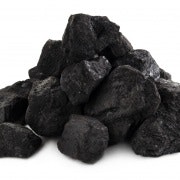Beat the liquidity trap
PORTFOLIO POINT: The looming reshuffle of companies in ASX indices offers canny investors the prospect of good buying in forced sales.
Unless you’re seriously considering one of Michael Feller’s small cap stars liquidity probably isn’t something you worry about too often. But although it usually carries negative connotations, a liquidity event – like the one that will happen in two weeks’ time – can be quite lucrative to the watchful investor.
Standard & Poor’s announced on Friday (December 2) which companies will be shuffled in and out of several ASX indices on December 16. There were no surprises in the new, rebalanced indices of the ASX 100 and ASX 200, but there are a dozen stocks to watch now in the ASX 300 – although they have the size to remain in the index but there are indications they don’t have the liquidity.
These are an eclectic mix of ASX 300 stocks that the ratings agency will be looking at in the March/April rebalancing. At the most stressed end you have resources companies Northern Iron (NFE) and Straits Resources (SRQ), litigation funder IMF Australia (IMF), mining services provider Clough (CLO), manufacturer Austal (ASB) and technology company Oakton (OKN). Property group REA (REA), environmental services company Tox Free Solutions (TOX) and advertising stock STW Communications (STW) are also close to being cut out of the index on liquidity grounds.
Drop-outs from the ASX 200 are Chorus (CNU), Gunns (GNS), Murchison Metals (GNS) and OM Holdings (OMH). They will be replaced by Integra Mining (IMD), Imdex (IMD, Ramelius Resources (RMS) and Silver Lake Resources (SLR). Billabong International (BBG) fell out of the top 100 and was replaced with Perseus Mining (PRU).
Wilson HTM asset allocation strategist Damien Klassen says the main threat to the share price of the stocks facing liquidity crises is potential forced selling by institutions with small-cap mandates.
Many institutional funds have to follow strict guidelines under their constitutions. For example, a fund that can only own an ASX 300 stock has to sell when the company falls out of the group.
“As the stocks drop out of that ASX 300 universe effectively that means you’ve got forced sellers,” he says, which can depress the share price of an already illiquid stock and make it even harder to get out of. The trouble is that it’s also much harder for a company to get back into an index once they’ve been kicked out, because the level of liquidity required to enter is double or triple the level that will get them dropped from the list, Klassen says.
But – and this is where retail investors should be watching carefully – just because a company falls out of an index due to liquidity problems doesn’t necessarily make it a bad stock to own and it may create a buying opportunity in the process.
Klassen says one of these is Tox Free Solutions, which he doesn’t believe is liquid enough to remain in the ASX 300. He thinks a large sell-down by institutions could be a good chance for investors to get into Tox – which he thinks is a good company – at a lower price.

As you can see, the companies in the red zone are most likely to fall out of the ASX 300 as their liquidity relative to others in the index is too low to let them retain their spot. All except for REA Group are ranked in the mid-to-high 200s and have small-to-medium market capitalisations. The surprises are that the giant of the group – REA – and Challenger Infrastructure could fall out, while Collins Foods, whose shares are now less than half of its IPO price in August, could slip in.
Liquidity is low among sub-ASX 200 stocks market as retail investors pull their money out and institutional investors take over, though above that level it appears to be more resilient. But with the political indecision in Europe and the US unlikely to end any time soon, it is probable that dampened liquidity could continue to be a feature at the bottom end of the ASX 300.
















